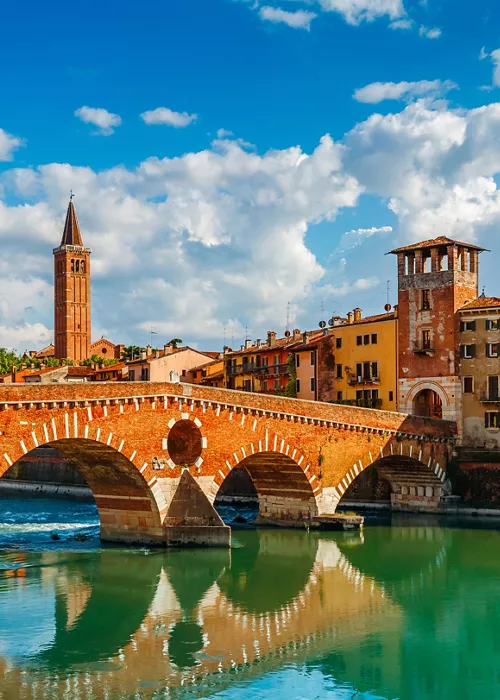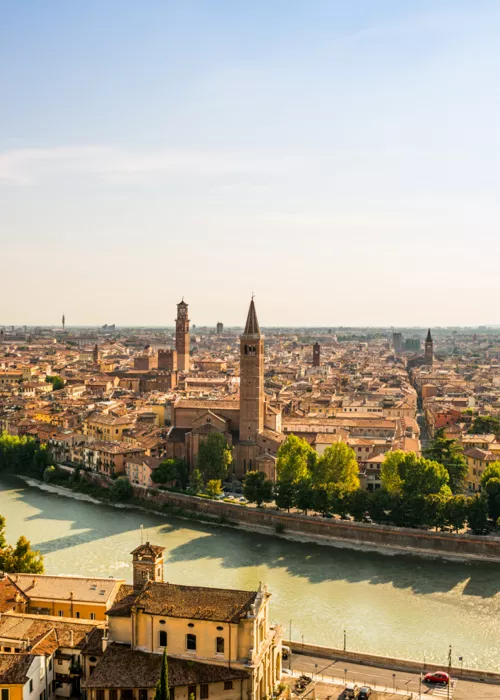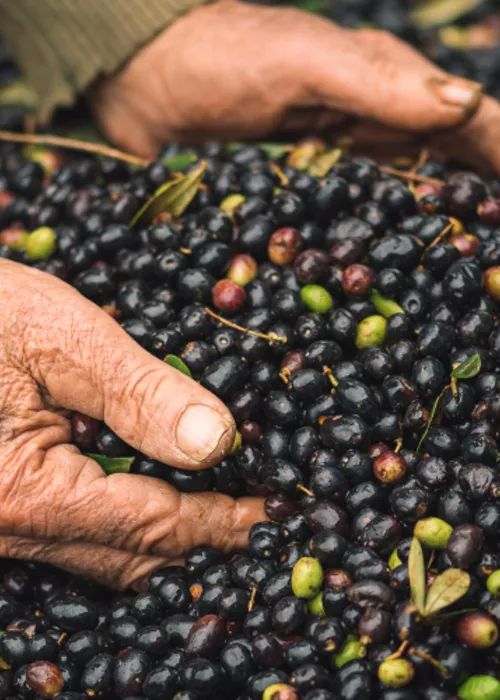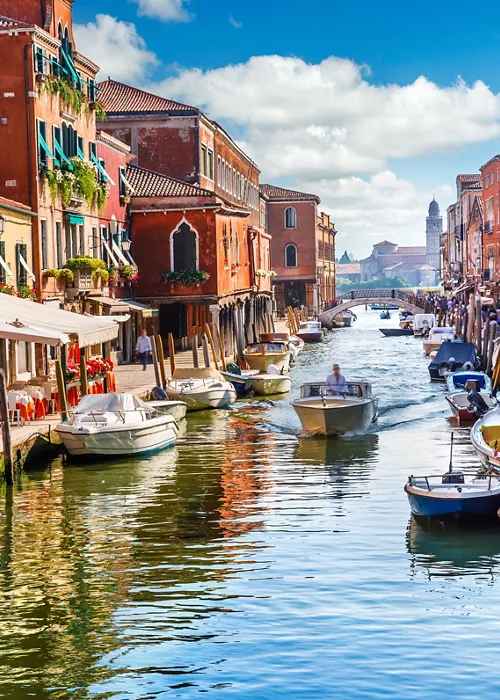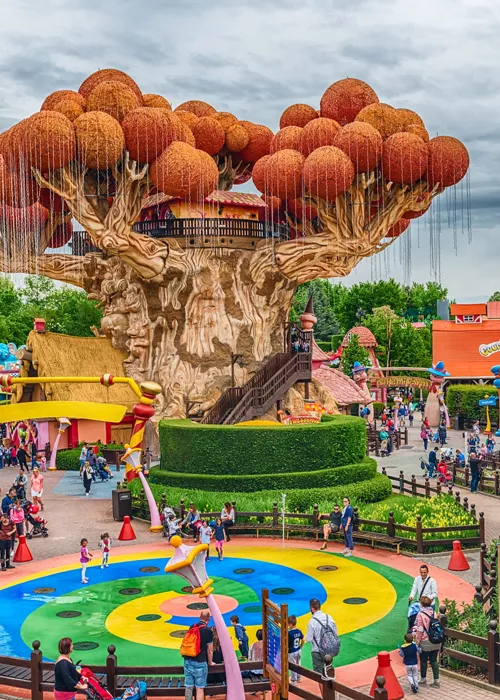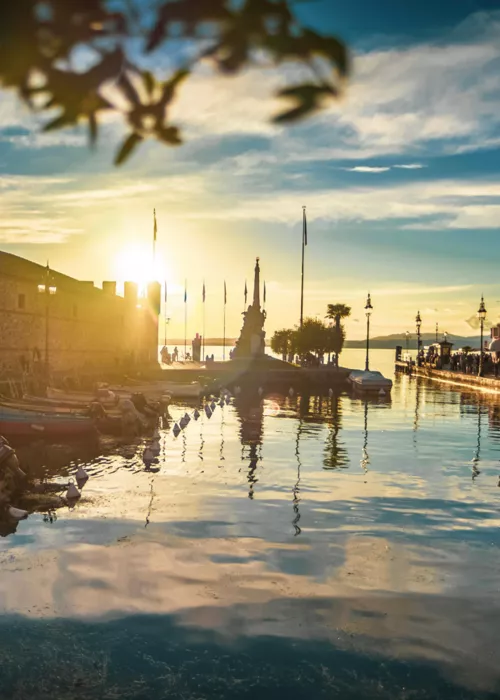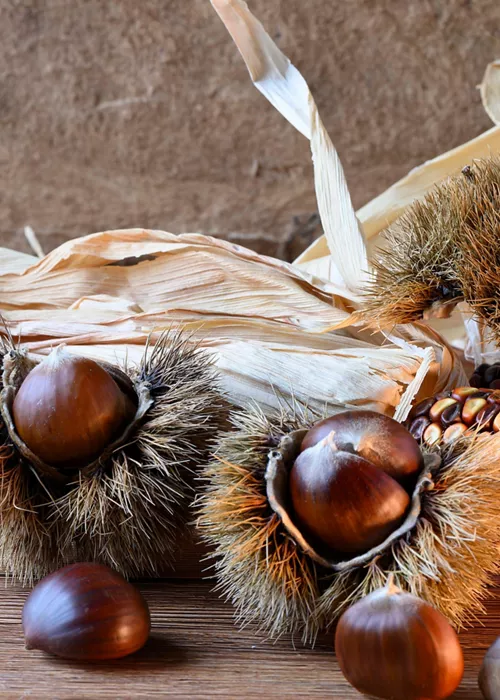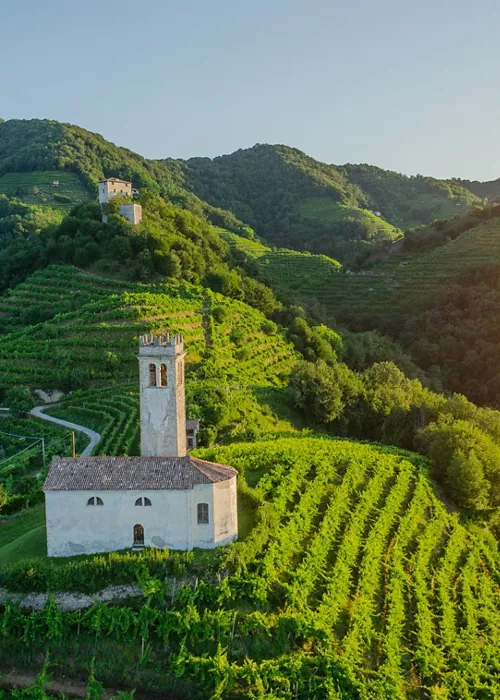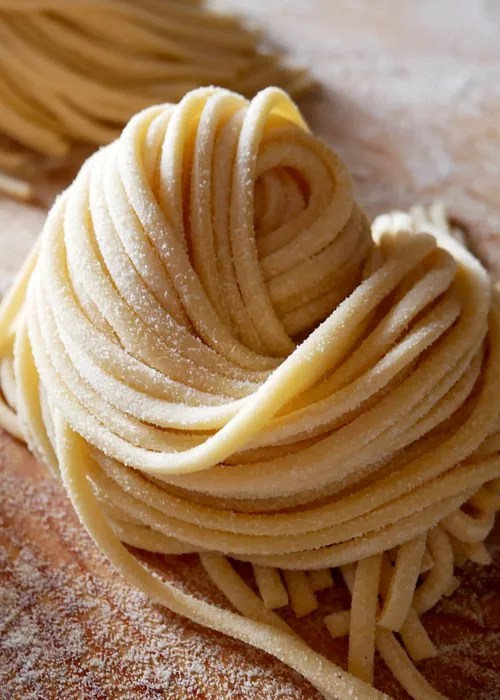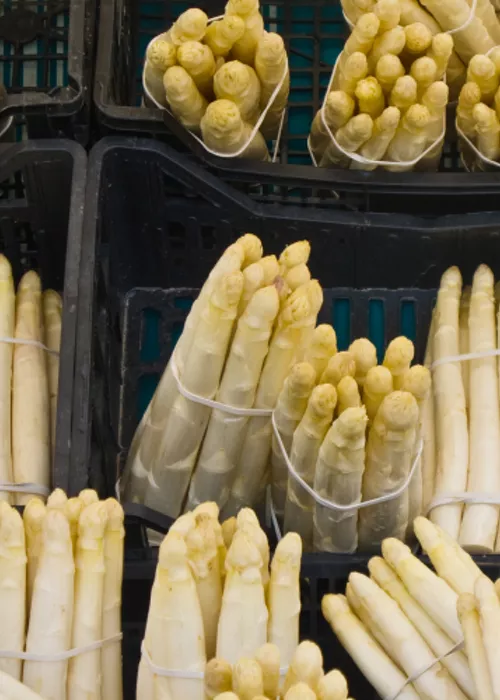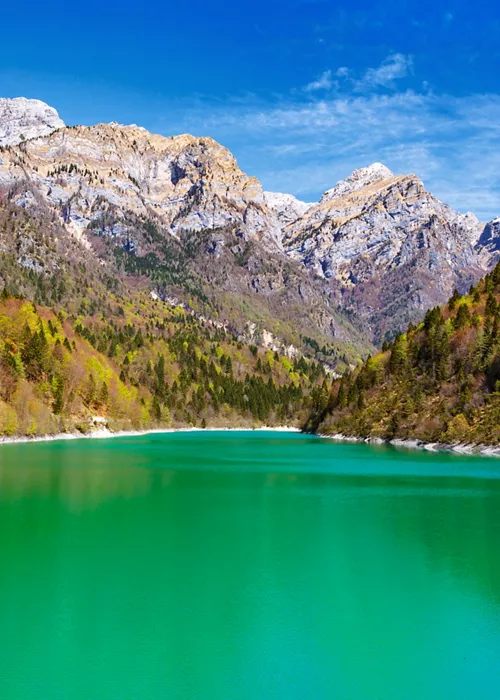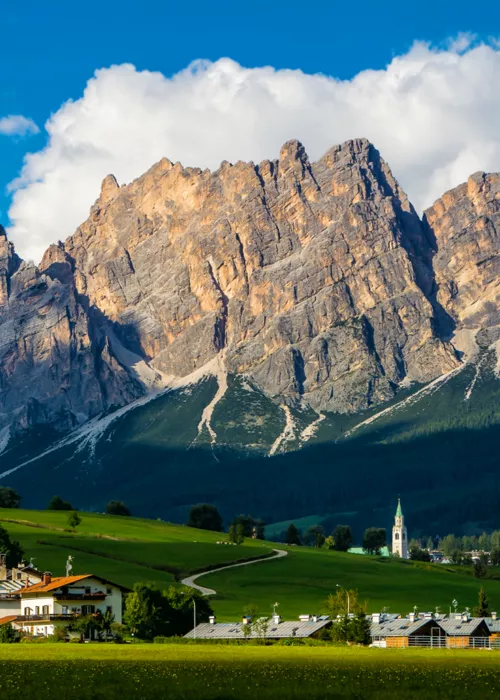Flavours of Verona: wines, recipes and places of taste in Verona
6 minutes

Set between the gentle arms of the Adige River, Verona is much more than just a Shakespearean stage set, and has a surprisingly elegant soul, from Piazza delle Erbe and the magical atmosphere of the city-centre streets to Juliet's House and the imposing Arena, which tells tales of the Roman era. But Verona is not only the past. It's a vibrant and lively city, where art, landscape and food and wine traditions dance together through medieval streets dotted with wine bars and taverns. On the occasion of Vinitaly, we take you to discover its rich food and wine heritage through wine trails, walks in the gentle hills of the province, breathtaking views and traditional recipes to taste.
All aspects of Valpolicella
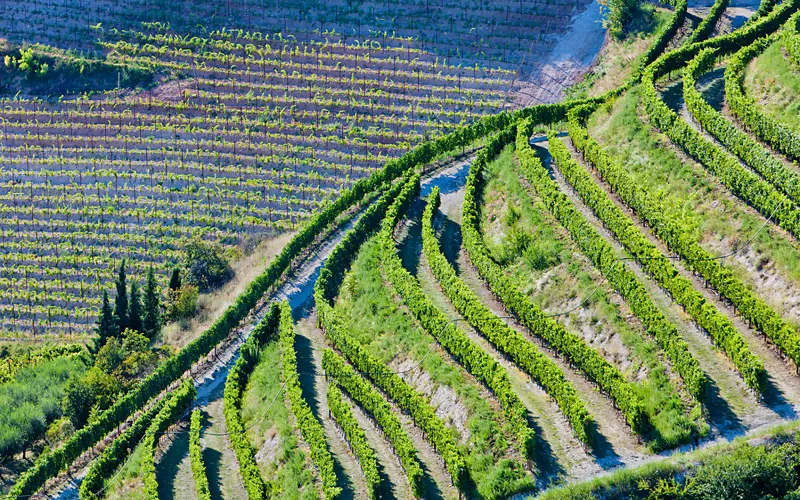
The itinerary to discover the wines of Verona begins in Valpolicella, the heart of Venetian red wine production, among hills framed by Lake Garda and the Lessini Mountains, to discover three fascinating yet different expressions of this region. We start with Amarone della Valpolicella DOCG, an unusual wine made by drying Corvina, Corvinone and Rondinella grapes in typical drying lofts for a few months, and then left to age in oak for up to ten years. This is what gives its life to this great ageing wine, which is extremely smooth and velvety, with a lively acidity but never tiring on the palate. According to legend, the wine was first made by a local winemaker who forgot about one barrel, and the wine, exceeding its fermentation period, lost its tendency to sweetness. From a fortuitous event, one of the most precious wines on the winemaking scene was born, with its unmistakable sensory profile of ripe red fruits, spices, liquorice, tobacco and leather, and remarkably persistent finish. It is the ideal companion for Pastissada, a horse meat stew marinated for several hours, or even an entire day, in red wine with onions, spices and aromatic herbs. A slowly simmered dish that is tasty and succulent, often accompanied by polenta, the pride and joy of the traditional taverns.
From the eloquence of Amarone to the liveliness and freshness of Valpolicella Classico, made from the same grapes but without drying, retaining a bright ruby-red colour, fresh floral and cherry notes, and supple tannins. The most versatile expression of Valpolicella pairs perfectly with Risotto all 'Amarone, one of the most iconic traditional first courses, made exclusively with Vialone Nano PGI, a particularly creamy and aromatic rice variety that is native to the region. It is also an excellent match for the king of Veronese cuisine, 'bollito misto' (mixed meat stew), accompanied by pearà, a thick, spicy sauce made with meat broth, stale bread, bovine marrow and abundant black pepper.
Tasting in Valpolicella simply must conclude with Recioto della Valpolicella DOCG, the sweet ancestor of Amarone, obtained by stopping the fermentation in order to retain the residual sugar. A meditation wine that represents the oldest winemaking tradition of this region and reveals a surprisingly wide range of aromas, from jam to alcohol-preserved fruit and chocolate. The sweetness is never cloying, thanks to a persistent acidity that invites the next sip and makes it perfect either alone or enjoyed together with Sbrisolona, a crumbly, buttery cake made with almonds, of interregional origin. After a stroll along the wine trails and a visit to the beautiful Renaissance villas, we continue towards the shores of the Garda.
Enchanting sips: the secret wines of Lake Garda
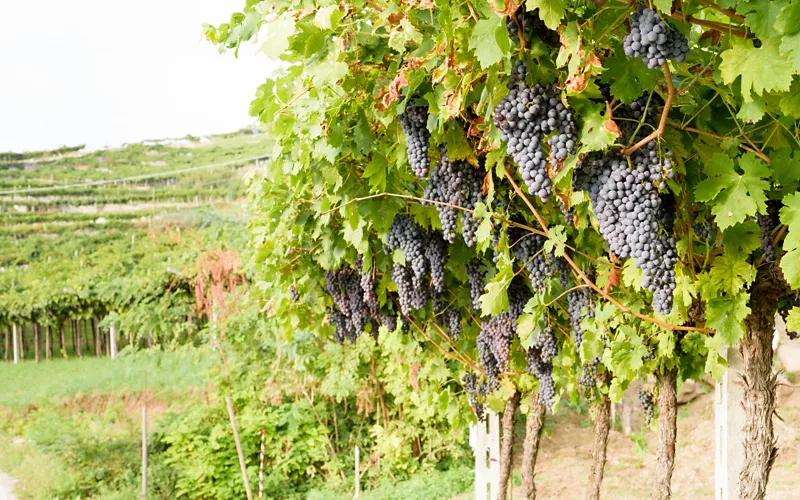
With stretches of crystal-clear water, port towns nestled between promontories, and the summit of Monte Baldo, the eastern shore of Lake Garda is another treasure trove of excellent wines. It begins with Bardolino DOC, a blend of Corvina, Rondinella and Molinara grapes. Fresh, dynamic and less full-bodied and tannic than the region's great reds, it greets the nose with aromas of cherry, raspberry and aromatic herbs, which are even fresher in the rosé version. A delicate and refreshing wine, suitable as an aperitif or paired, in the Superior version, with a dish of Tortellini di Valeggio, small pasta dumplings with a meat-based filling. This gem of Venetian gastronomy traces its origins back to the picturesque village of Valeggio sul Mincio, and the battle between Mantua and Verona, when a general fell in love with a nymph who offered him these tortellini, tying the pasta together in a knot to symbolise indissoluble love.
Travelling southwards along the Garda shore, you come across a wine of great elegance and freshness, Lugana DOC, from vineyards of Turbiana grapes, known locally as Trebbiano di Lugana. These benefit from the limestone soils and gentle lake breezes, in a unique microclimate that enhances the aromatic complexity and minerality of the wine. Notes of apple, almonds and white flowers, and a lively acidity that makes it ideal for the lakeland cuisine, such as risotto with perch, where the creaminess and sweetness of the dish is balanced by the freshness of the wine in a pleasant mingling of flavours. The sparkling version of Lugana DOC is also surprising, especially the late vintage, produced in limited quantities but not to be missed in order to know all the expressions of this grape variety.
However, the itinerary to discover the wines of Garda does not end here. A little further inland, we find Bianco di Custoza DOC, from morainic soils on which Garganega and Trebbiano Toscano grapes are grown and then blended to create this wine with fruity aromas, notes of apple and pear pulp, and a pleasant minerality. This white wine takes its name from the village of Custoza, the scene of Risorgimento battles, where you can taste one of the most popular Venetian dishes: Bigoli with sardines. Thicker and coarser than spaghetti, bigoli combine well with the savoury taste of the sardines and make an ideal pairing with a glass of Bianco di Custoza, which tones down the pungent intensity of the sauce.
Among the castles and wines of Soave
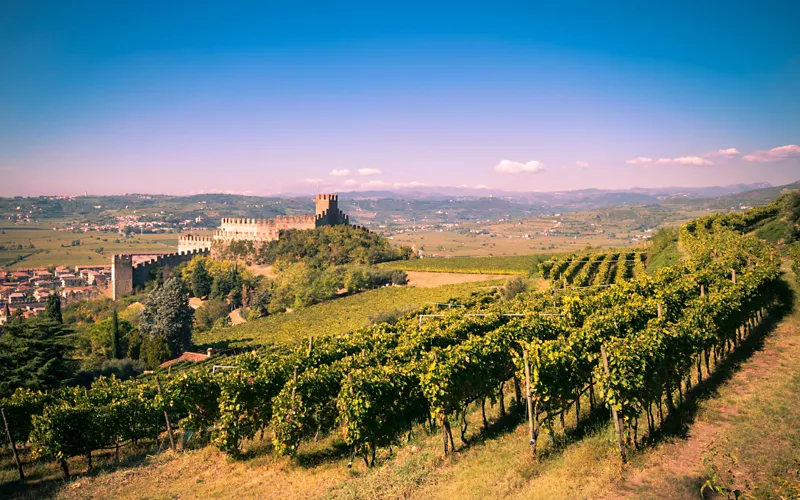
The route continues through the wine roads of Soave, with over 6,600 hectares of vineyards that make this area the largest vineyard in Europe. This is a particularly suitable region, thanks to the volcanic matrix of the soil, and also fascinating from a historical and cultural point of view. These hills, east of Verona, are a succession of Garganega vineyards, castles and medieval towers where time seems to have stopped at the era of ladies and knights. Soave DOC, known for its typical almond finish and a ripe fruitiness sometimes of tropical fruits, can be tried in combination with the Torta al Monte Veronese, a savoury pastry starring this PDO cheese, which is produced from the mountain pastures of Lessina. Soft, delicate and slightly sweetish, it is added, grated and cubed, to eggs, milk and cream inside a puff pastry crust, creating a rustic, tasty and comforting dish. Soave DOC, which is more complex in its Riserva version with at least two years of ageing, is especially surprising in its sweet version, Recioto di Soave DOCG. A passito wine, which takes its name from "recia", i.e. "ear", which refers to the traditional practice of selecting the tops of dried bunches of grapes which, with its full-bodied notes of candied fruit, honey and vanilla, joins the Pandoro in a delicious end to a meal. Known all over the world, but a child of Verona, at the end of the 19th century Domenico Melegatti and the artist Angelo Dall'Oca Bianca invented a conical cake in the shape of an eight-pointed star, which has become an integral part of traditional Italian confectionery.
Discover Lessini Durello: fine sparkling wines
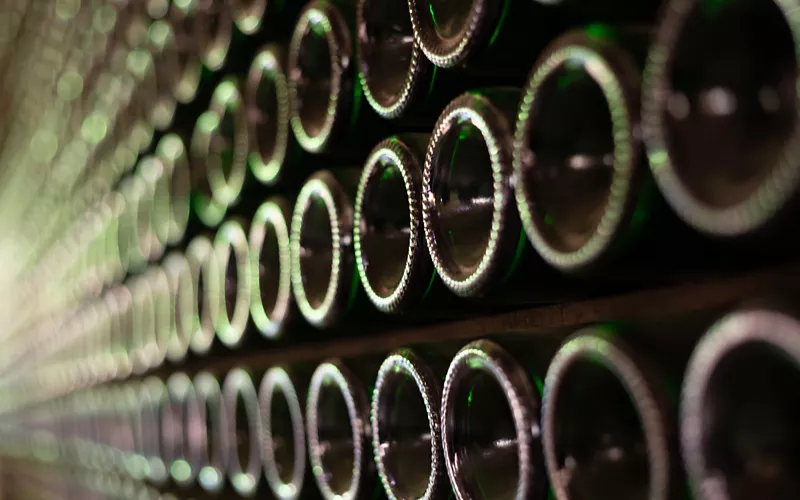
The last leg of the itinerary takes you through the volcanic hills of the Lessini mountains, which straddle the provinces of Verona and Vicenza. These slopes are home to the Durello, a robust native grape variety with excellent acidity, which yields classic sparkling wines. They can be matured the classic way, for at least 24 months on the lees, or aged with the Martinotti method to create a niche but truly remarkable wine . The fine and persistent effervescence, refreshing notes of green apple, citrus, toasted bread and other flavours from the lees maturation, make the Spumante Lessini Durello Doc the ideal pairing for baccalà. Otherwise known as salt cod, baccalà can be served 'alla Veronese' with onions and perhaps capers, olives and anchovies, or Vicenza-style in a slow-cooked cream sauce: whichever you choose, this sparkling wine is the perfect accompaniment to cleanse the palate between mouthfuls.


